Centre Stage in the Fiestas del Pilar
Here in Zaragoza, Spain, I was fortunate enough to see the Fiestas del Pilar – a huge festival which takes place every year around the 12th October (el día de nuestra Señora del Pilar). There is a myth that St. James the apostle witnessed the Virgin Mary appear on a pillar in Zaragoza and so a huge basilica was built around it, and now every October people from all over Spain travel to offer flowers and fruit to the Virgin Mary and there are a huge variety of events and traditions which make up the Fiestas del Pilar.
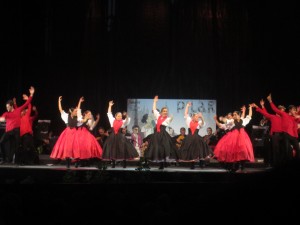
One of these traditions is La Jota, a traditional Aragonese folk dance. As I am studying it for my Year Abroad Research Project (YARP) I had asked people in casual conversation during my first couple of weeks in Zaragoza about the dance, and they all told me I would see lots of Jotas in the festival, and they were right! There were performances every day throughout the festival and I got to see various different Jota groups perform, each with their own style or take on the dance. There were key elements to all the dances such as the raising of the arms, the footwork of heel, toe, heel, toe and lots of jumping and clicking of heels. But there were noticeable differences for example some of the dances used props such as scarves, others included castanets, and there was also a difference in the clothing, some of which was more traditional than others.
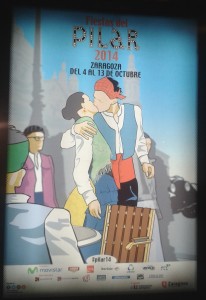
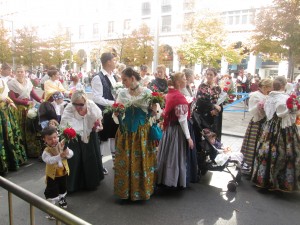
The traditional clothing was beautiful, the women wear long, mostly flowery, dresses with shawls and their hair is always tied in a plaited bun, whilst the men wear shorts and waistcoats with long socks and braces, and headscarves. The people dressed in these outfits are known as baturros/baturras or joteros/joteras. Even the official poster for the festival was of two baturros kissing in the Plaza del Pilar (the main square in Zaragoza). The Jota was a key part of the festival, and on the main day of the festival almost everyone in the city centre came dressed as baturros to the ofrenda de flores. People of all ages dressed in the traditional clothes of the region, most of which have been passed down through generations, and queued up to give their flowers to the Virgen del Pilar which were displayed on a metal pyramid in the main square. At the top of the pyramid was a statue of the Virgin Mary and the flowers were placed beneath her – it was incredible!
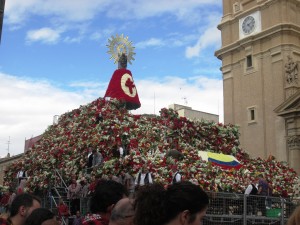
There were many Jota performances happening that day on a stage right in front of the flowers, so it is clearly a very important tradition in Aragón. The music that accompanies the dancing is very unique – you can hear the spanish twang of the guitar, and a lute and mandolin are often played too, and sometimes the brass undertones of the trumpet as well as tambourines or castanets which make a “clac-clackety-clac” sound to add to the layers of the folk music. The Jota is not just a dance, however, there are also Jota singers who are mostly female and sing in a loud (and warbly) voice mostly about the Virgen del Pilar. I have to say the singing was not really my cup of tea, but I loved the dances!
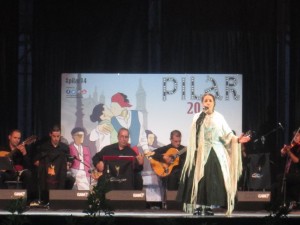
I am very lucky that I got to see so many Jota performances in the festival, not only as now I have a lot of photographs and video footage of the dance for my project, but also because I got to blend in with the crowds watching the dances where most people were taking photos and videos. The next step in my project is to find out what the differences are between the different styles of the dance I have seen. I have found some dance schools in Zaragoza where they teach La Jota, so I am going to enroll soon and hopefully it will help me understand the dance a bit more, not to mention it will open up many doors for me to start the interview part of my project. I also need to head to the local library to research a bit about the history of it all, but for now I have lots of raw material to begin to analyse (and enjoy)!


Leave a Reply